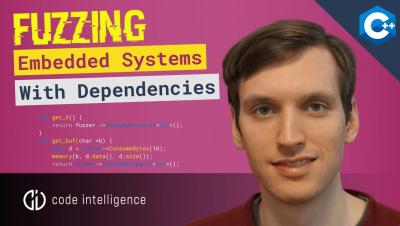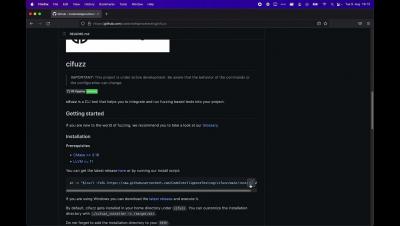Security | Threat Detection | Cyberattacks | DevSecOps | Compliance
Code Intelligence
Mocking Embedded Systems With Fuzz Data
Reliability Testing for Web Services
Fuzzing Embedded Systems With Dependencies (for Automotive)
How To Test for SQL Injections [Complete Guide]
In theory, modern web frameworks provide secure ways of accessing databases, making SQL injections a non-issue. The reality looks much different. Among other injection vulnerabilities, SQL injections are still atop the OWASP Top 10, and organizations still frequently fall victim. Therefore there is no way around software security testing solutions that can reliably detect SQL injections.
Installing cifuzz CLI
How to Write a Fuzz Test for JavaScript
Jazzer.js Brings Effective Fuzzing to JavaScript (Open-Source)
TL;DR Fuzzing JavaScript is easy now In this post, we introduce you to our new open-source fuzzer for the JavaScript ecosystem, Jazzer.js. Jazzer.js is a coverage-guided, in-process fuzzer for the Node.js platform. It’s based on the experience we gathered developing its namesake Jazzer, our fuzzer for the JVM platform. Internally, Jazzer.js uses libFuzzer as a solid industry-standard engine and brings many of its instrumentation-powered mutation features to JavaScript.
How to Find A Bug in A Web Application Fast
Improvements in Go Fuzzing (Golang 1.19)
Golang was the first programming language to support fuzzing as a first-class experience in version 1.18. This made it really easy for developers to write fuzz tests. Golang 1.14 introduced native compiler instrumentation for libFuzzer, which enables the use of libFuzzer to fuzz Go code. libFuzzer is one of the most advanced and widely used fuzzing engines and provides the most effective method for Golang Fuzzing.











